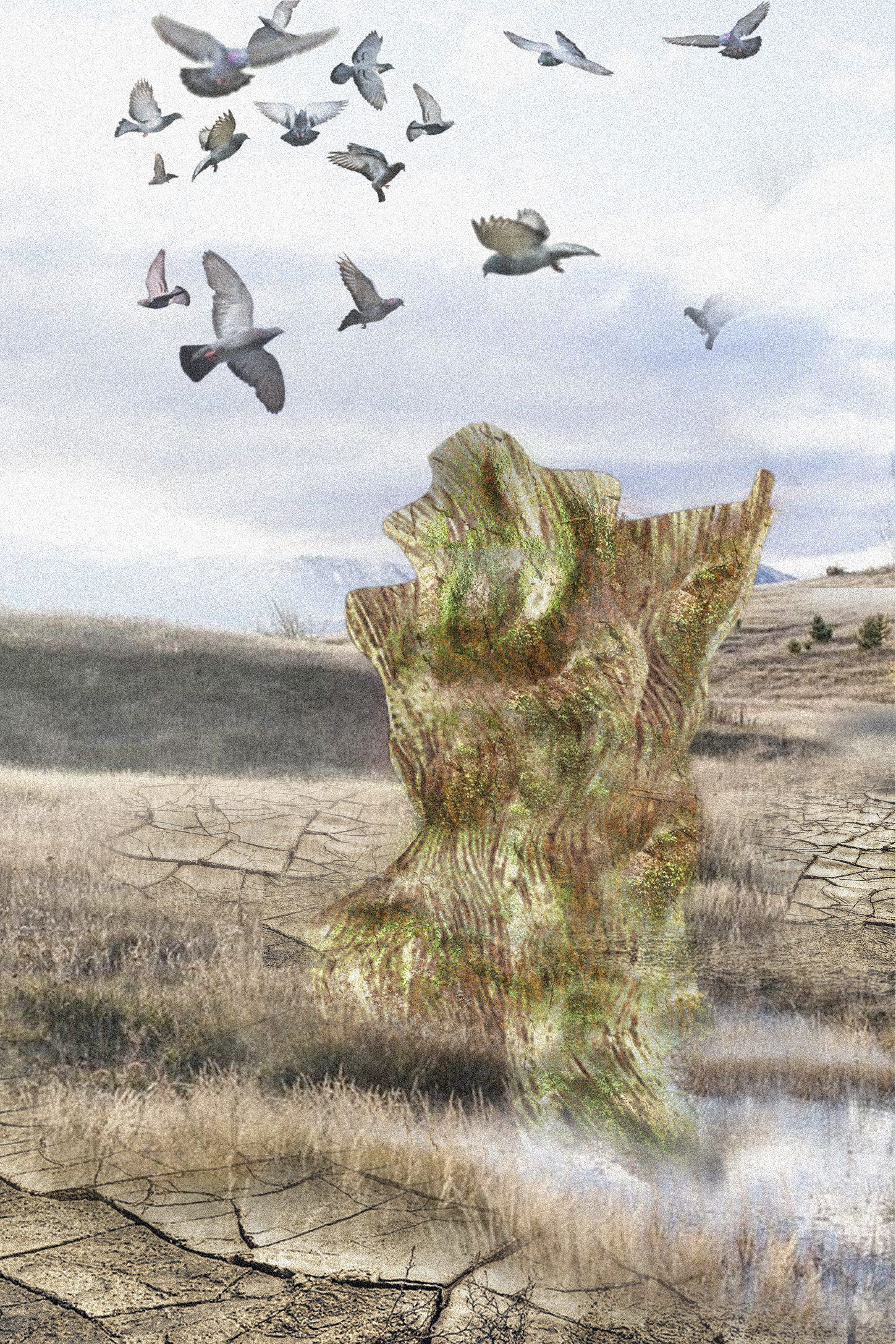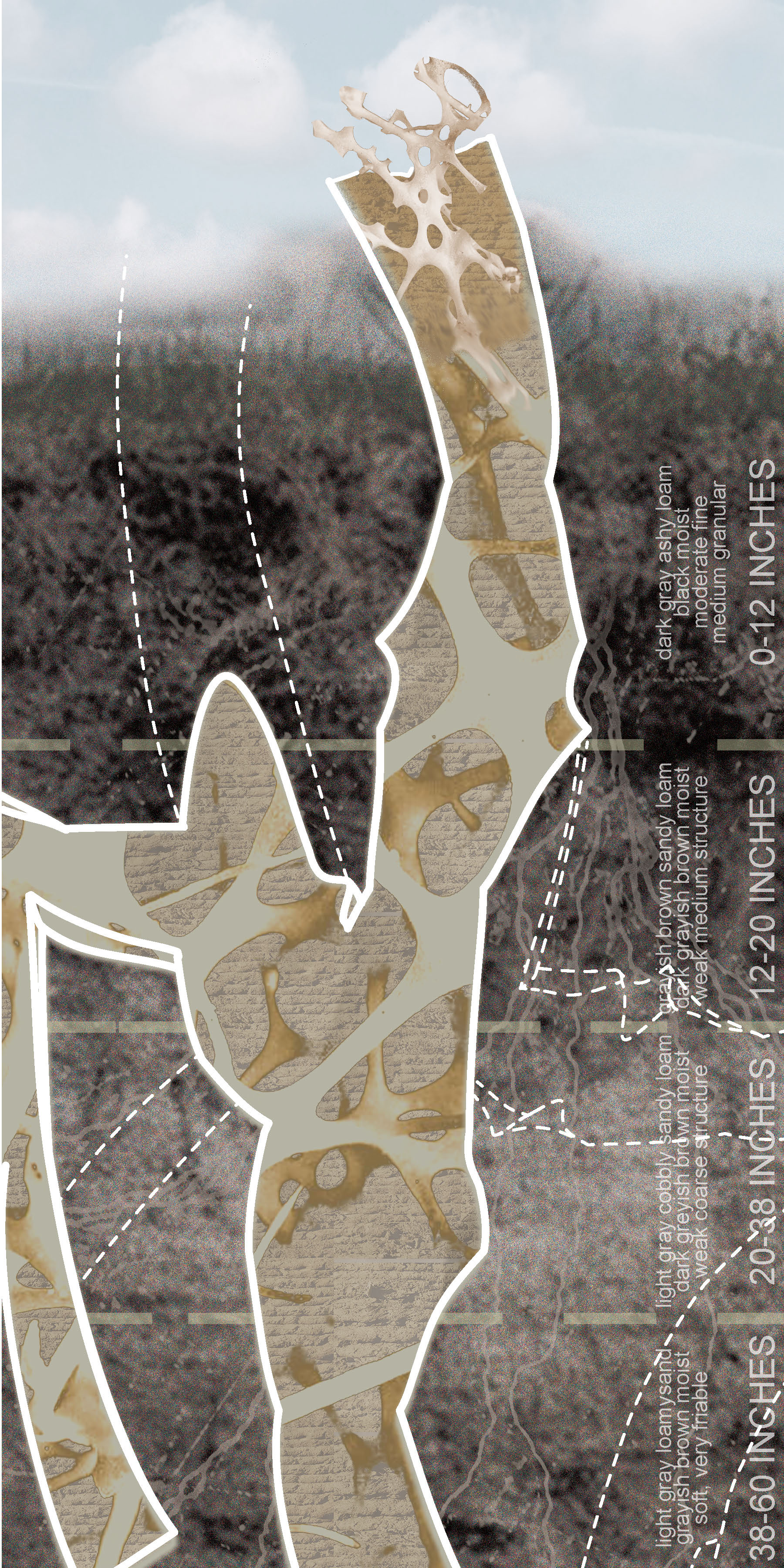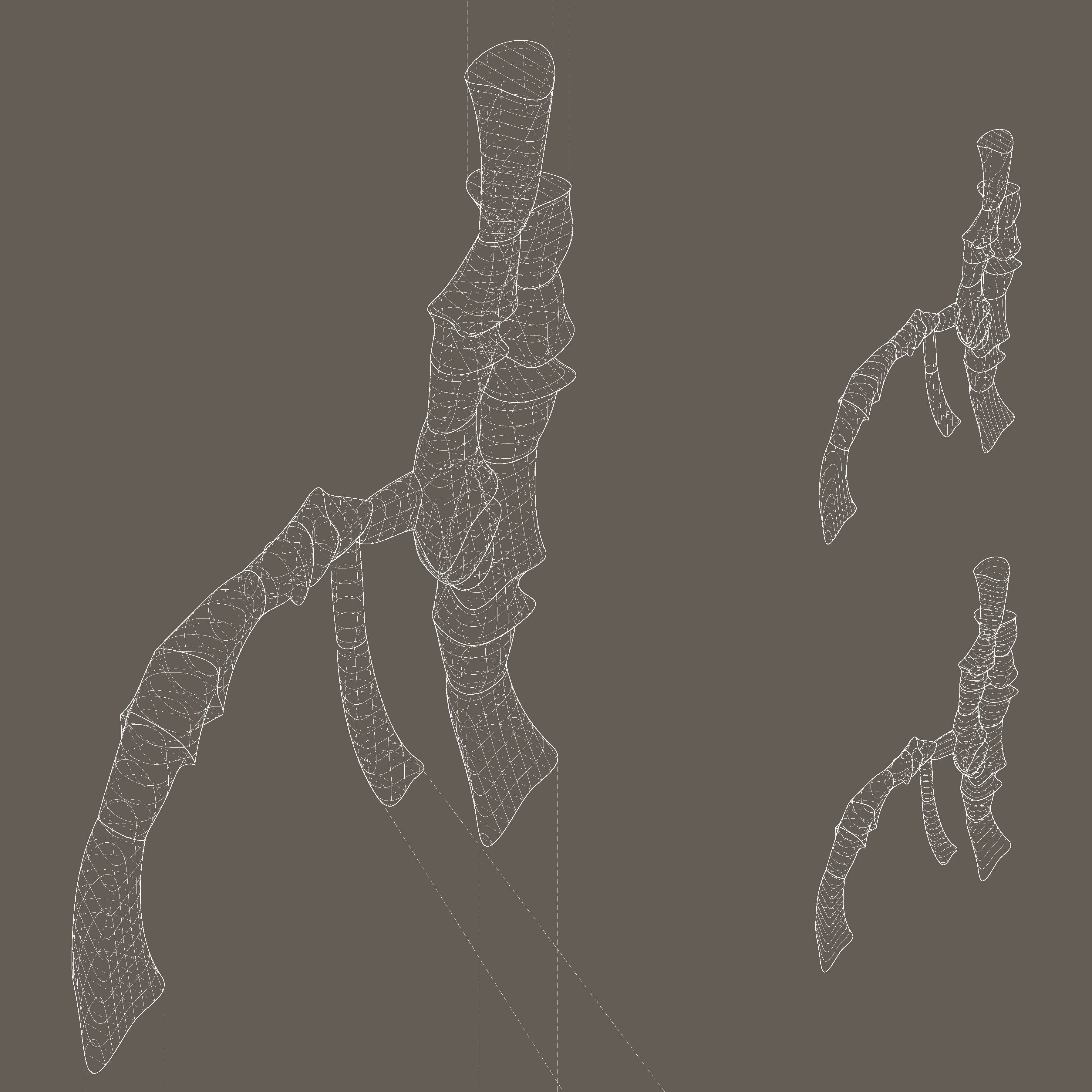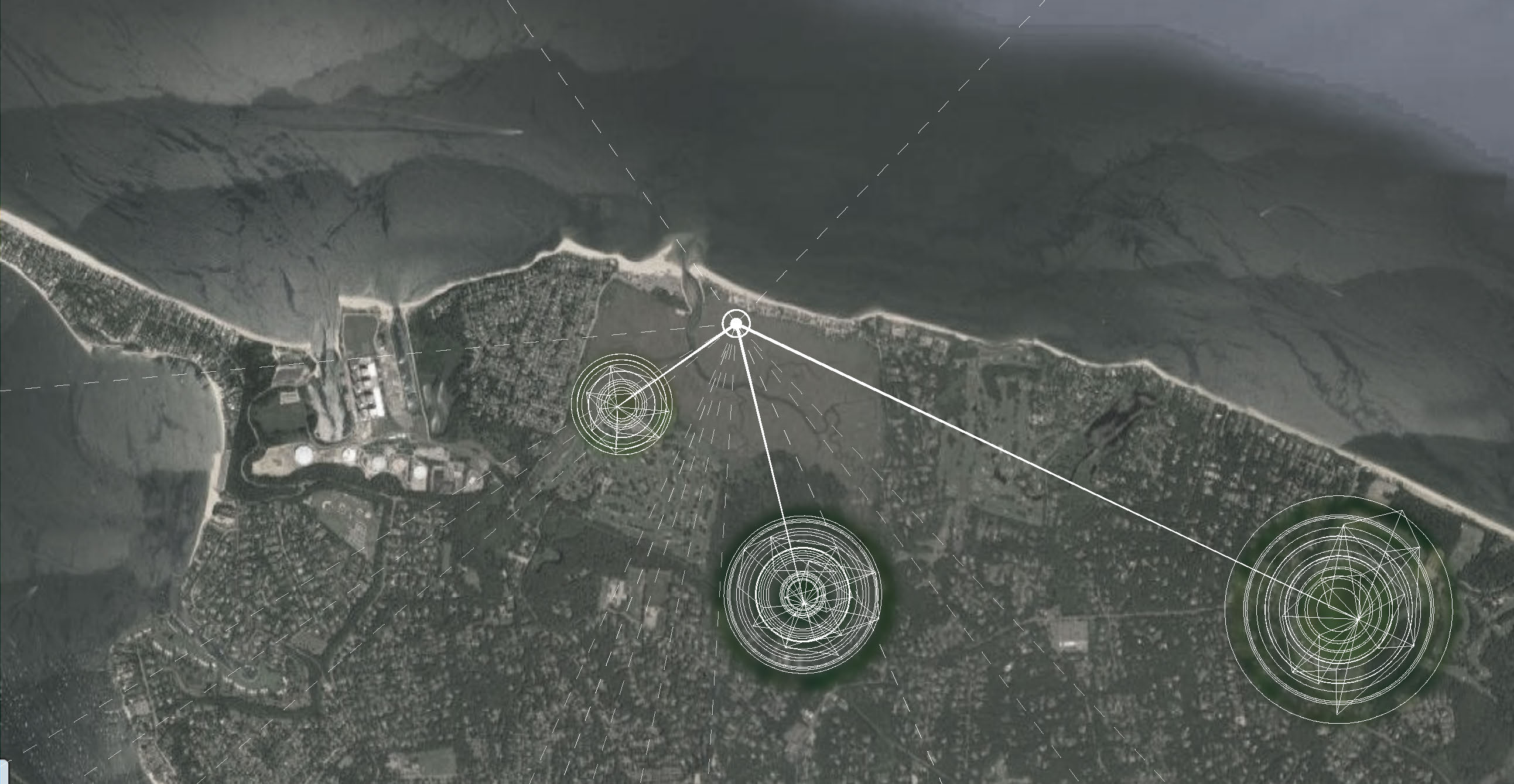↓



Biosynthetic Niche
Immured Growth
Pittsburgh, PA
Marantha Dawkins
Fall 2019
In collaboration with Tyng Peck, Jonathan Cheng, Tye Silverthorne
Our project sits within an imagined post agrarian future in which the current looming crisis of phosphate scarcity has passed its singularity. The triple threat of finite resource, inefficient mining, and over fertilization has left the country, and most of the world, without one of the key resources we need to feed our population. With the number of mouths ever increasing farmers had looked to chemical fertilizers for boosted agricultural yields – not a new practice by any means – but in this pursuit had become overzealous. The pressures causing these issues in our time have only been exacerbated, and so has the reaction. Whatever excess fertilizer or chemical that has been sown on the fields and not been able to be absorbed is dragged away through rainfall, flooding, and other erosive actors. These vital nutrients then typically collect in low-lying aquafers and disperse as particulates on the lower surfaces and/or surrounding areas.
Building off of these concepts, in particular the two emergent crises of over fertilization and increased flood risk, we have proposed an artefact of this situation.
The once five-hundred-year flood has now become an almost weekly occurrence. With it washes ashore layer upon layer of phosphorous, nitrogen, potassium, and other regenerative nutrients – onto lands which have not been used for agriculture in decades due to the arid soil resulting from industrial and monocultural farming procedures. Over time these mineral deposits build up around vestiges in the landscape, rocks, dead roots, clay or stiff soil – anything that allowed them to hold and not be washed back by the receding tides. What must have also come with the floods (although we aren’t entirely sure, it could have also been long-dormant in our soil, or some peculiar result of a chemical process natural or not) is a bacteria which has acted to solidify these mineral deposits into structures embedded within the soil.
Over time the wind and water have washed away the loose layers of topsoil which had no biomass to anchor it down, unveiling these rich mineral formations to above ground life. Due to their composition and the way in which they were formed these structures proved alluring to many different avian species. As things began to grow on their nutrient rich surfaces, the birds began pecking at the forms. Ingesting portions inadvertently, and very consciously taking other pieces away to use as building materials, they began to redistribute the immured minerals to neighboring ecologies very much in need. Through a natural regenerative process, the birds, which were the instigators, but later also an abundance of other organisms within the ecology have begun the long process of replenishing the depleted landscape using these deposits of veritable fertilizer gold. The extremely concentrated object begins to dissipate and spread its riches back out across the landscape.
![]()
![]()
![]()
![]()
![]()
Marantha Dawkins
Fall 2019
In collaboration with Tyng Peck, Jonathan Cheng, Tye Silverthorne
Our project sits within an imagined post agrarian future in which the current looming crisis of phosphate scarcity has passed its singularity. The triple threat of finite resource, inefficient mining, and over fertilization has left the country, and most of the world, without one of the key resources we need to feed our population. With the number of mouths ever increasing farmers had looked to chemical fertilizers for boosted agricultural yields – not a new practice by any means – but in this pursuit had become overzealous. The pressures causing these issues in our time have only been exacerbated, and so has the reaction. Whatever excess fertilizer or chemical that has been sown on the fields and not been able to be absorbed is dragged away through rainfall, flooding, and other erosive actors. These vital nutrients then typically collect in low-lying aquafers and disperse as particulates on the lower surfaces and/or surrounding areas.
Building off of these concepts, in particular the two emergent crises of over fertilization and increased flood risk, we have proposed an artefact of this situation.
The once five-hundred-year flood has now become an almost weekly occurrence. With it washes ashore layer upon layer of phosphorous, nitrogen, potassium, and other regenerative nutrients – onto lands which have not been used for agriculture in decades due to the arid soil resulting from industrial and monocultural farming procedures. Over time these mineral deposits build up around vestiges in the landscape, rocks, dead roots, clay or stiff soil – anything that allowed them to hold and not be washed back by the receding tides. What must have also come with the floods (although we aren’t entirely sure, it could have also been long-dormant in our soil, or some peculiar result of a chemical process natural or not) is a bacteria which has acted to solidify these mineral deposits into structures embedded within the soil.
Over time the wind and water have washed away the loose layers of topsoil which had no biomass to anchor it down, unveiling these rich mineral formations to above ground life. Due to their composition and the way in which they were formed these structures proved alluring to many different avian species. As things began to grow on their nutrient rich surfaces, the birds began pecking at the forms. Ingesting portions inadvertently, and very consciously taking other pieces away to use as building materials, they began to redistribute the immured minerals to neighboring ecologies very much in need. Through a natural regenerative process, the birds, which were the instigators, but later also an abundance of other organisms within the ecology have begun the long process of replenishing the depleted landscape using these deposits of veritable fertilizer gold. The extremely concentrated object begins to dissipate and spread its riches back out across the landscape.




